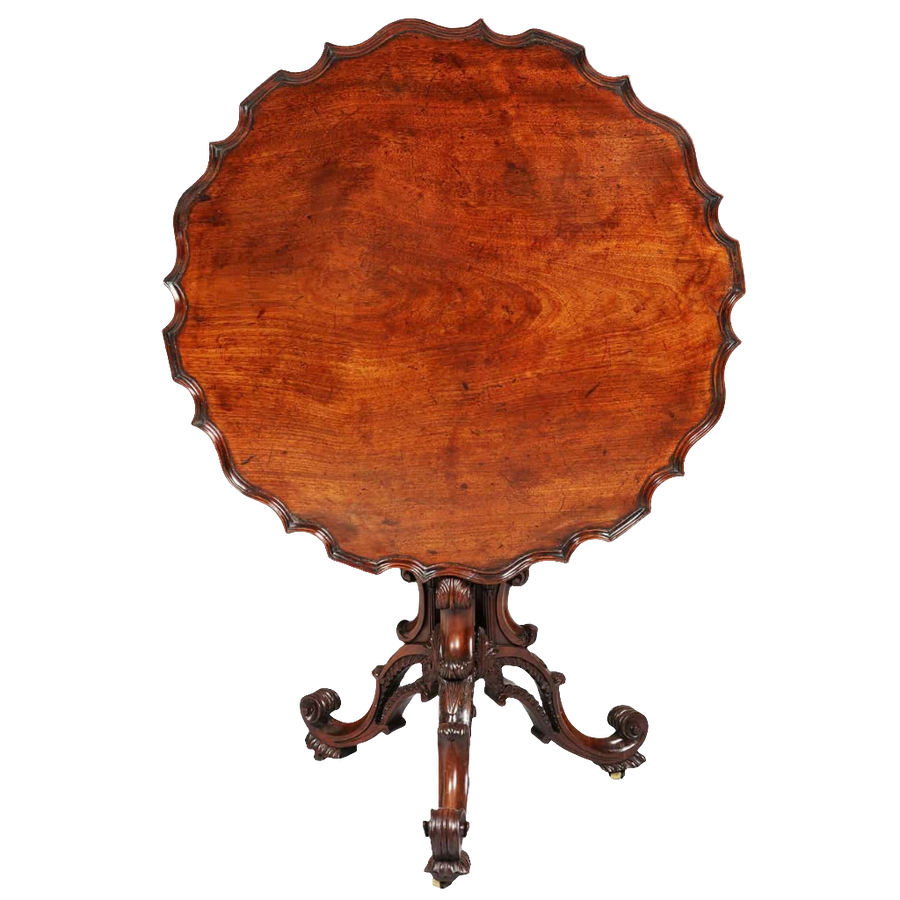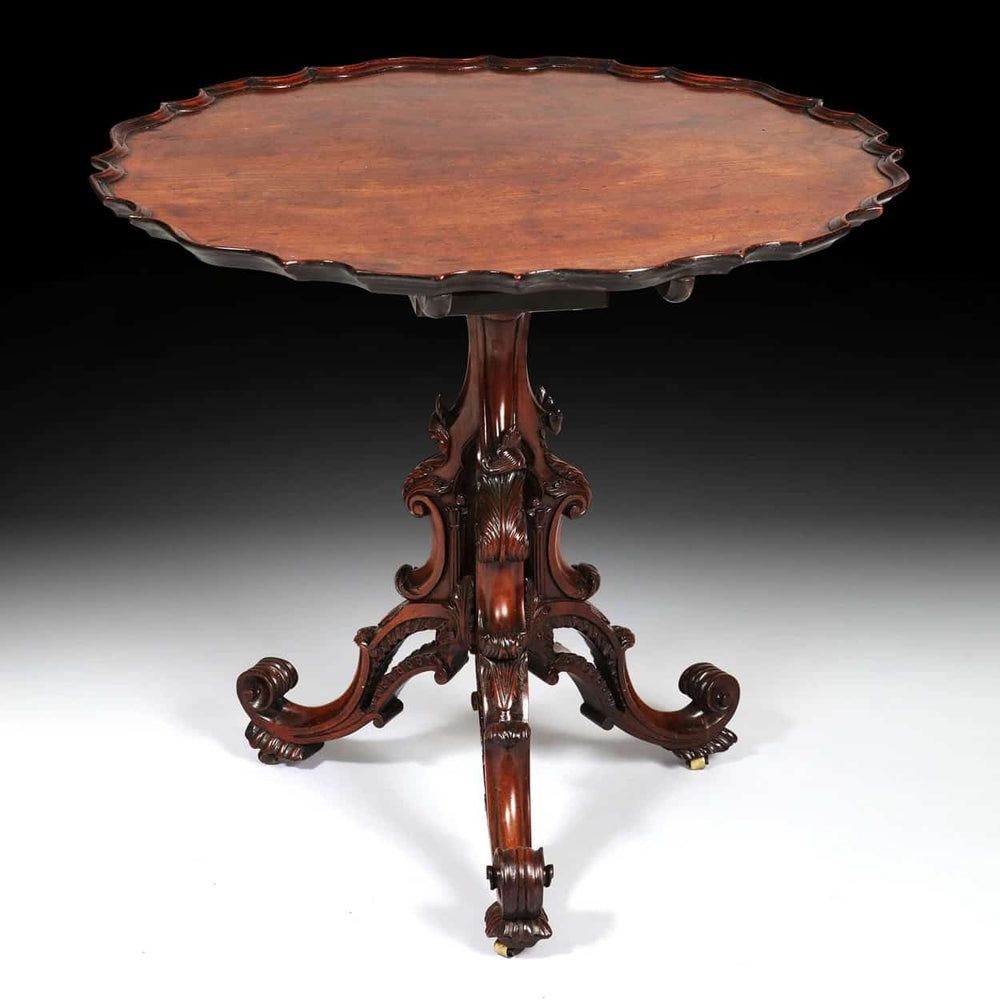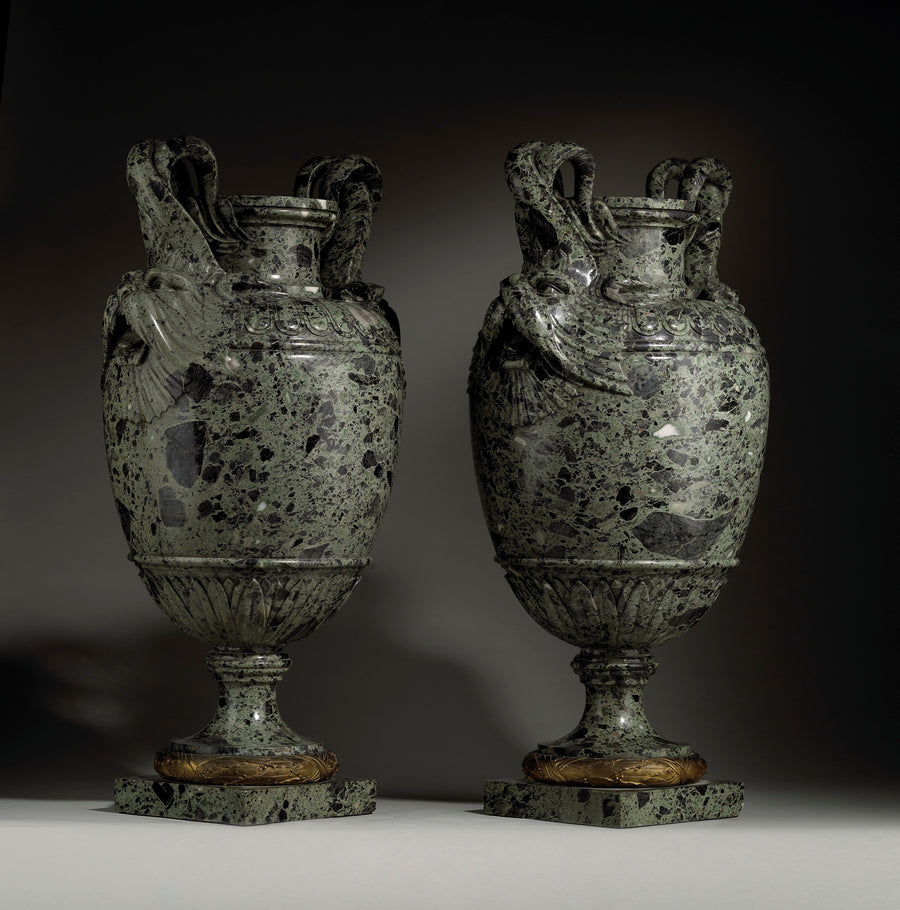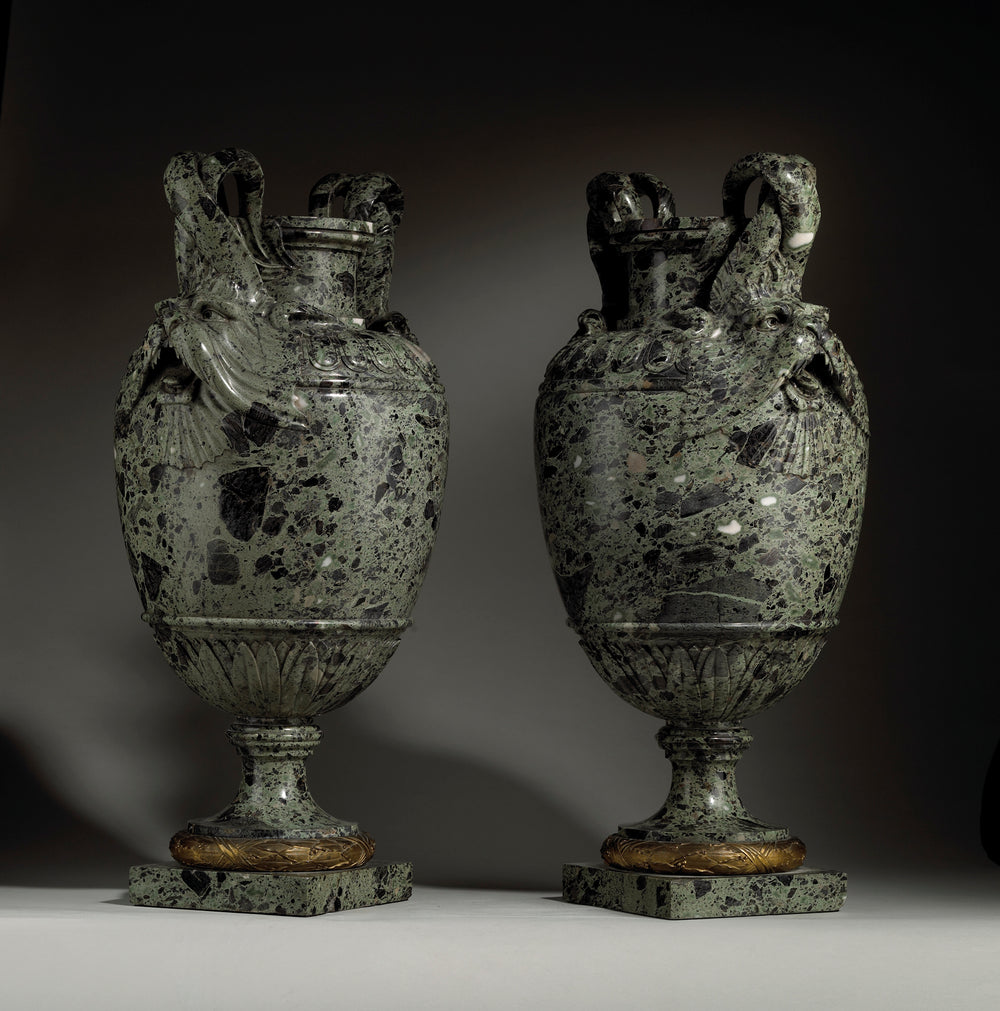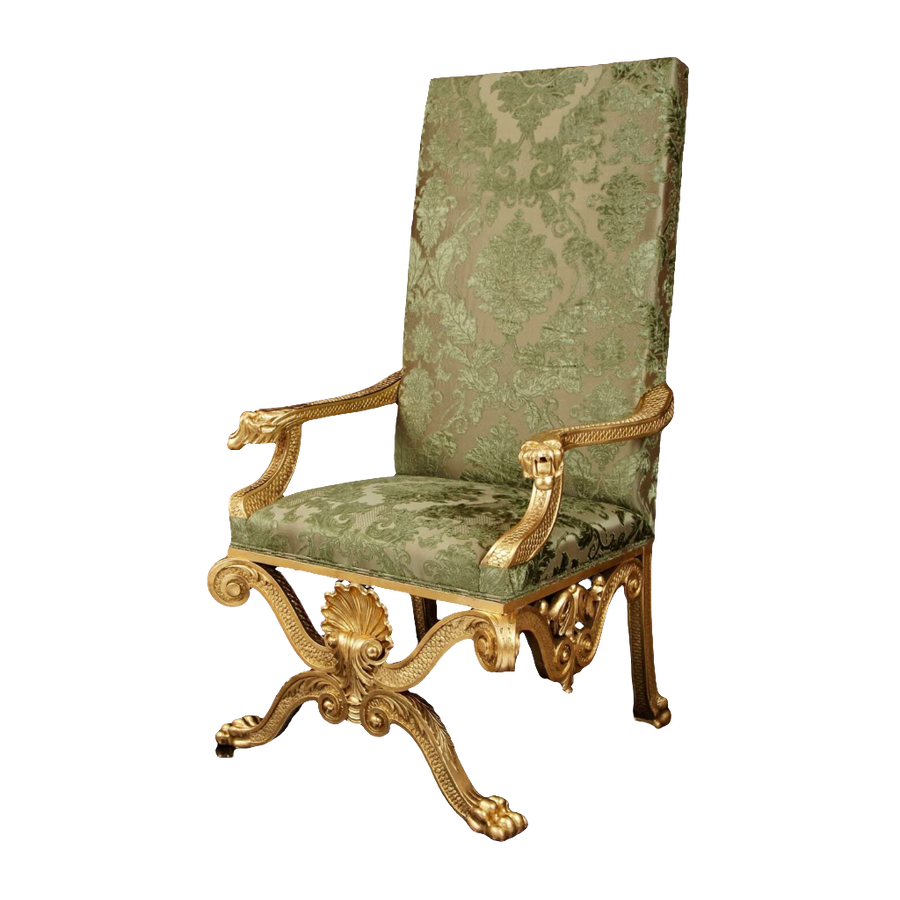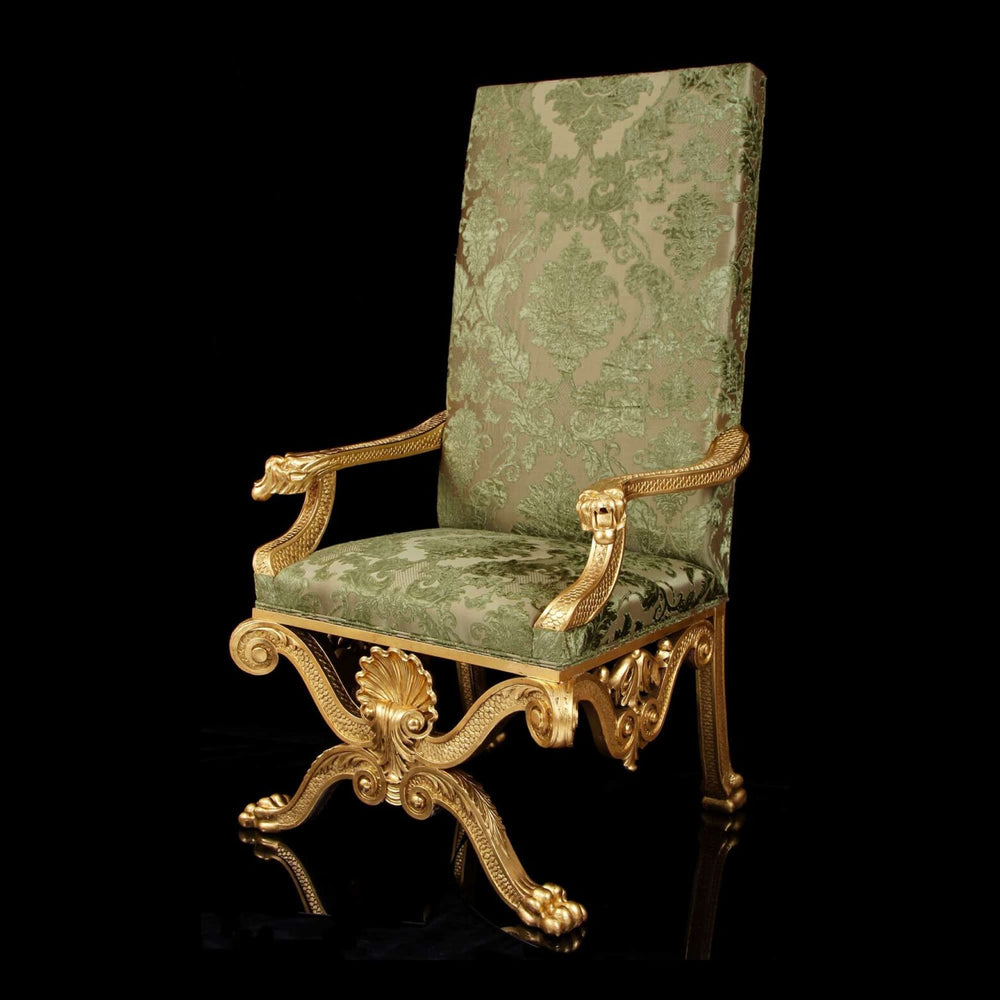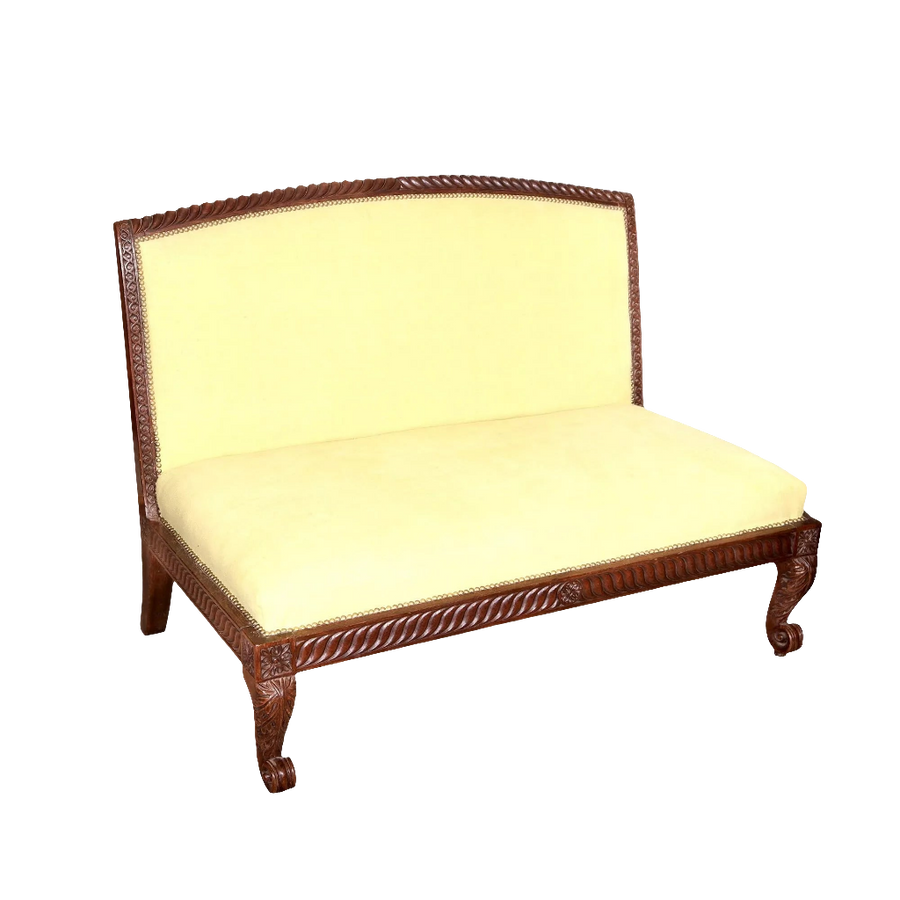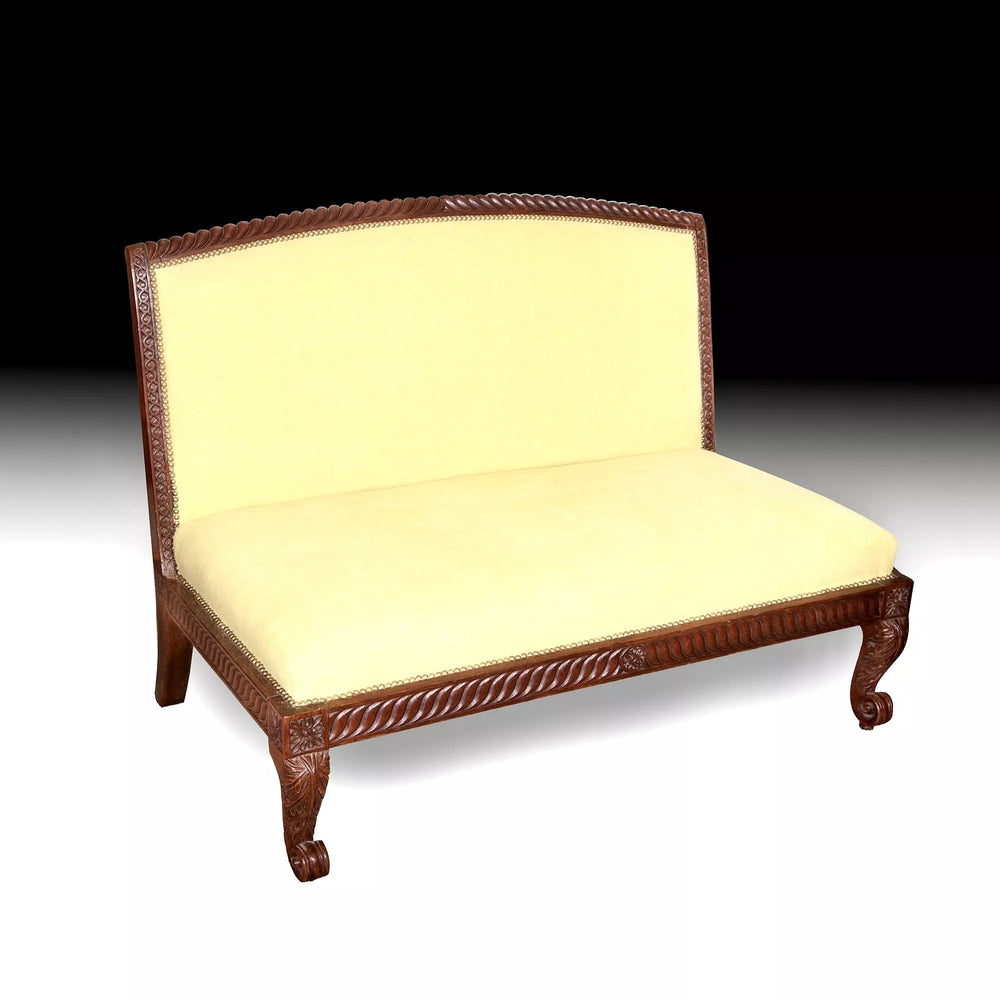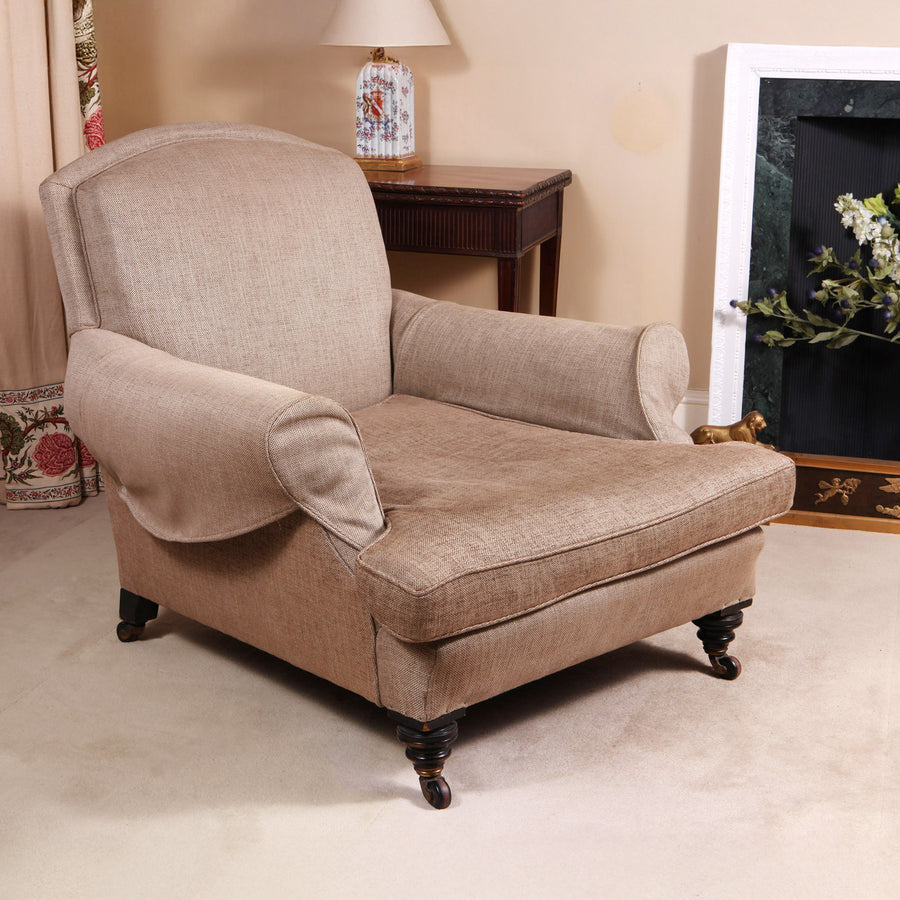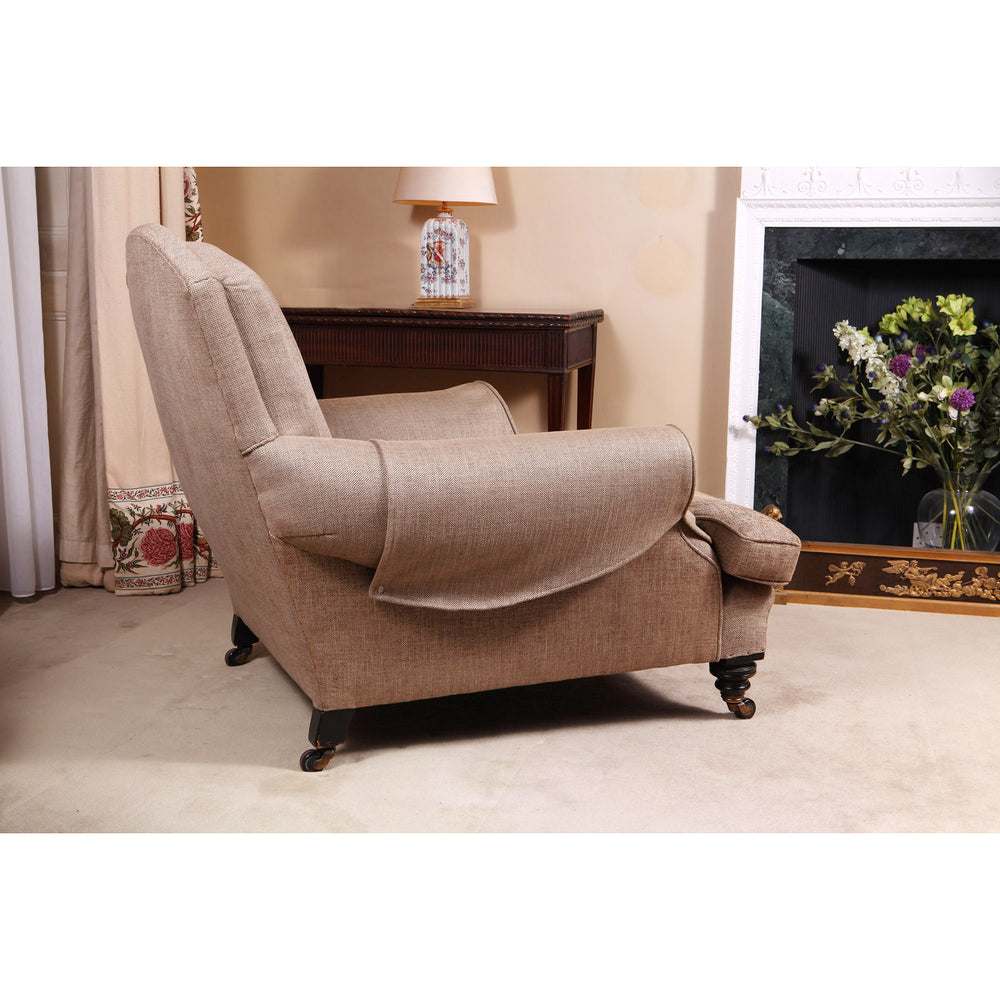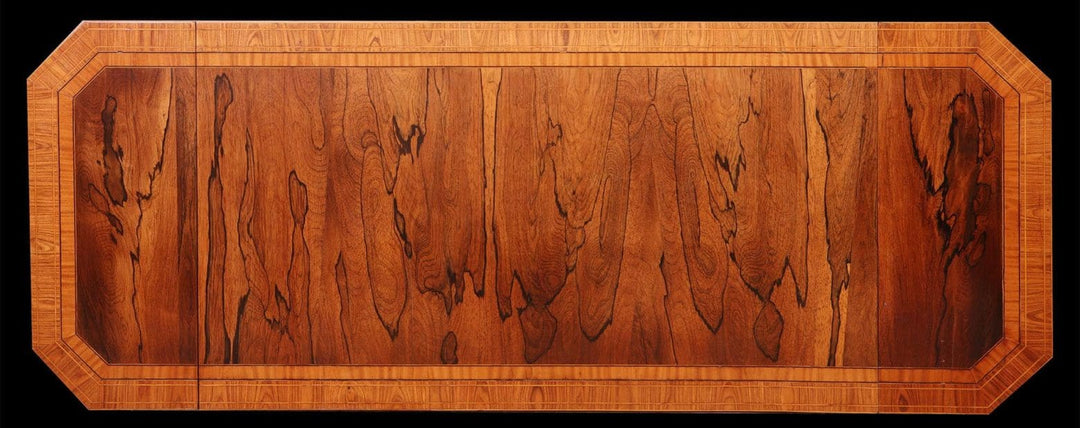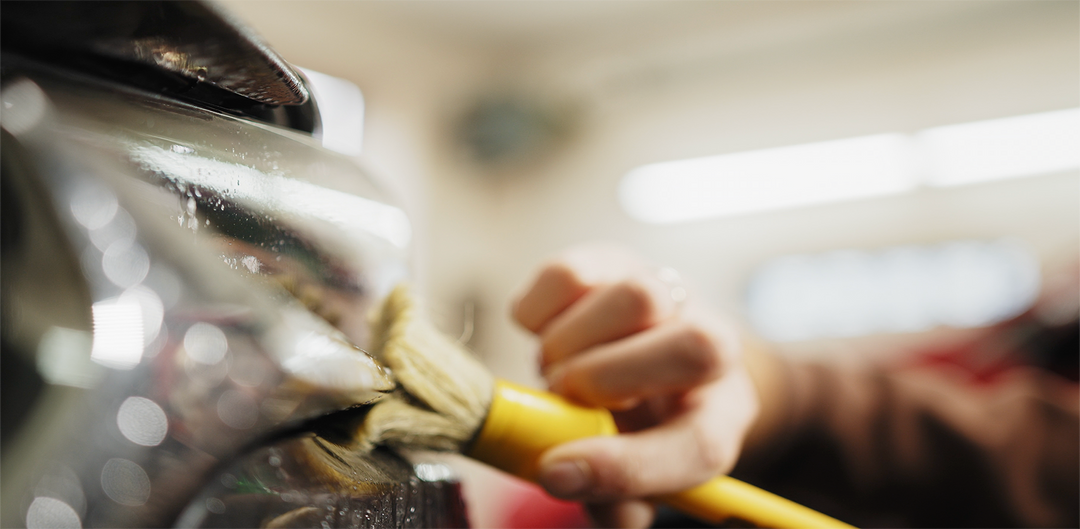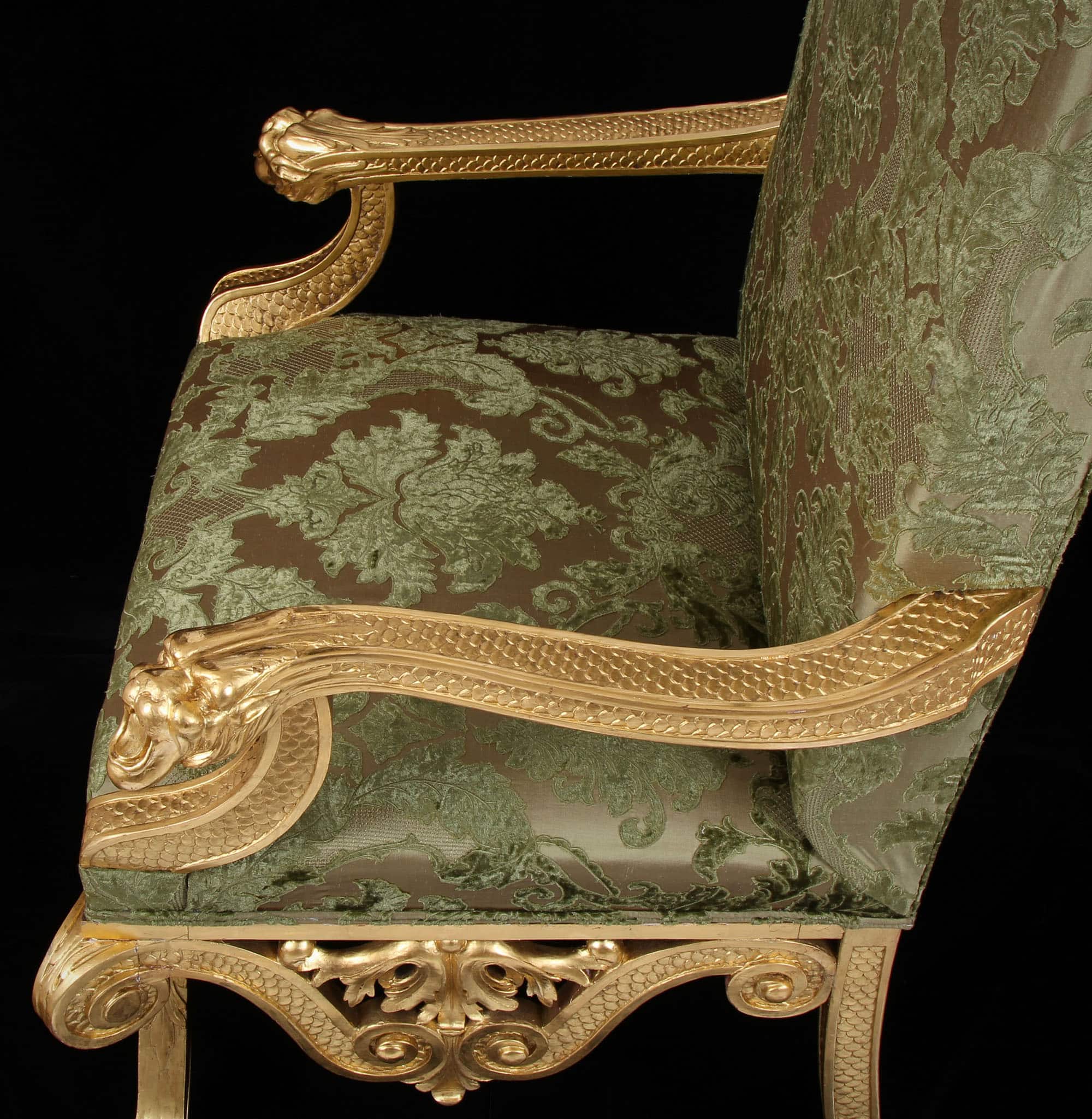
🪑 Upholstery Techniques & Materials
18th Century Upholstery
This period marked the transition from purely functional seating to luxurious, status-symbol furniture.
-
Horsehair Stuffing:
- Used for padding due to its durability and resilience.
- Often layered with softer materials like wool or feathers for comfort.
-
Traditional Stitched Upholstery:
- Craftsmen used hand tools to build up layers: webbing, hessian, horsehair, scrim, and calico.
- Techniques like bridle ties, stuffing ties, and edge stitching created sculpted, long-lasting seats.
-
Springs:
- Not yet common in the early 18th century. Comfort was achieved through stuffing and tensioned webbing.
-
Frames:
- Often made of oak or mahogany, with carved details in Rococo or Neoclassical styles.
19th Century Upholstery
The Industrial Revolution brought innovation and mass production, but traditional craftsmanship remained prized.
-
Coil Springs:
- Introduced mid-century, revolutionizing comfort.
- Tied into webbing and lashed together, then covered with hessian and stitched into place.
-
Rubberised Hair & Latex:
- Later 19th-century substitutes for horsehair, offering more flexibility and ease of use.
-
Machine-Made Nails & Plywood:
- Allowed for more intricate curves and faster production.
-
Hybrid Techniques:
- Many artisans combined traditional hand-stitching with newer materials for durability and cost-efficiency.
🧵 Fabrics & Textiles
Damask Silks
- Damask is a reversible patterned fabric, often woven from silk or cotton.
- In the 18th century, silk damask was a hallmark of aristocratic interiors — richly colored, often in crimson, gold, or blue.
- Used for wall coverings, curtains, and upholstery, especially in formal drawing rooms.
Silk Velvet & Cut Silk Velvet
- Velvet offered a plush, opulent texture, favored for armchairs and sofas.
- Cut velvet featured raised patterns — often floral or geometric — created by cutting the pile in specific areas.
- Popular in both centuries, but especially in the Victorian era, where deep jewel tones and elaborate motifs dominated.
Horsehair Cloth
- A tightly woven fabric made from horse tail hair and cotton or silk warp.
- Known for its lustrous sheen, durability, and resistance to wear.
- Used extensively in Chippendale and Hepplewhite furniture, and still woven today by specialists like John Boyd Textiles.
Handmade Fabrics
- Prior to industrial looms, fabrics were woven by hand, often in small workshops.
- These included embroidered silks, linen damasks, and wool tapestries.
- Each piece was unique, reflecting regional styles and artisan skill.
🏛️ Style & Influence
- Rococo (early 18th century): Curved lines, floral motifs, and pastel damasks.
- Neoclassical (late 18th century): Symmetry, classical motifs, and muted damasks.
- Victorian (mid to late 19th century): Plush upholstery, dark velvets, and ornate carved frames.
- Arts & Crafts (late 19th century): Return to handcrafted simplicity, often with natural fibers and stylised patterns.




